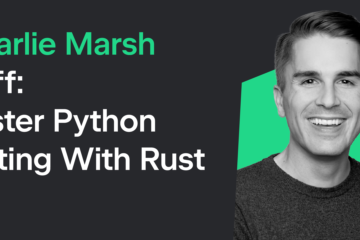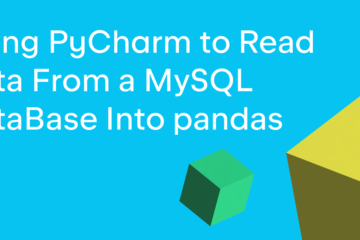We’ve been talking about PyCharm and popular cloud platforms recently. The AWS Toolkit for IntelliJ is a plugin that works with PyCharm and our other IDEs. How do you use it? How do you use AWS?
Mukul Mantosh produced a 10-part video+text+code tutorial Deploying Serverless APIs using AWS Toolkit for our PyCharm Guide. It’s a wonderful resource for those getting started, covering: setup, cloud databases, REST APIs, JWT, testing, and deployment.
We interviewed him about AWS, the plugin, his tutorial, and the process of writing it.
Let’s jump right in: What will people learn in this tutorial?
The intended audience is for beginners who are just starting out with AWS Services or focused towards creating serverless applications on AWS. You will get a basic understanding of how to develop, test and deploy APIs in AWS, and the good part is, you don’t need to worry about scaling or patching the infrastructure.
There were some advanced topics which were not covered in this tutorial like API throttling, setting up API Keys, adding WAF (Web Application Firewall) or enabling CORS. We were focusing only on beginners, but you can definitely check out the official AWS documentation for future reference.
Now an introduction: tell us a little about yourself, your background, and what you’re doing now.
Okay, my name is Mukul Mantosh. I am a software developer by profession and have experience working in different domains starting from healthcare, education and fintech. I am sorry if you find my statement looks similar to preparing for a job interview. 🙂
Currently I work as a senior engineer at Robert Bosch where my most of the time is focused on building backend apps using Python. Apart from my work, I will be focusing on learning and experimenting with new stuff from blogs, videos or webinars etc. and if my mind goes into bare exceptions, then I will be watching movies on Netflix.
You’ve been focusing recently on cloud computing?
Not exactly, I have been using cloud platforms since 2015. Sometimes I also have to play the role of devops engineer, not at a high-level, but I used to take care of performing common tasks like continuous integration & delivery (CI/CD) using Jenkins & Ansible as well as packaging Docker Images and pushing them to Amazon ECR (Elastic Container Registry).
What do you think of the developer experience of AWS Toolkit?
Well, from a developer point of view the AWS Toolkit is one of the good features that has been created by AWS. They have encapsulated in a beautiful way, specially when it comes to developing and running the lambda functions inside a container or deploying the packages. Great part is you are managing everything directly inside the IDE.
You and I first started talking during a PyCharm webinar, I believe. What’s your PyCharm story?
Yeah, I do remember we actually met during September 2020 on “PyCharm Docs” webinar.
I have been using PyCharm since 2017 when I transitioned in my career from a PHP to Python developer. During that time I was using Sublime Text but I was looking for an IDE which focuses more on developer productivity and a central place where I can manage lots of things like VCS, deployment, no separate database GUI tools. I then came across PyCharm.
What I personally like about PyCharm is the remote interpreter so you can write code in your machine but it’s going to be interpreted in a remote server without exhausting your own system resources.
This tutorial is a tremendous resource, but it was also a tremendous effort on your part. What did you learn about content creation?
Initially I thought it’s easy to create such content but I was wrong. There are lots of things going behind the scenes. You might think the final video duration is 20 minutes but actually it takes a couple of hours to days to completely process it.
There are lots of steps going on: recording, editing, syncing. Sometimes you even see that a package has become obsolete, then it’s a different headache — you need to re-record everything from scratch. I didn’t have much experience with video editing so I took a course on how to do video editing and parallely divided my time on recording & editing simultaneously. Trust me you are going to enjoy a lot while doing this but I take my words back it’s not really that easy, you need to have a good amount of patience only then will you enjoy the ride.
You and I got to know each other during this process. You have an impressive view of things. Can you tell us what you might work on next?
To be honest there are lots of things going in tech. It feels more like race against time. But definitely have plans to explore on FastAPI, Kubernetes, Golang or Rust.
The post PyCharm AWS Tutorial: An Interview with Mukul Mantosh first appeared on JetBrains Blog.


